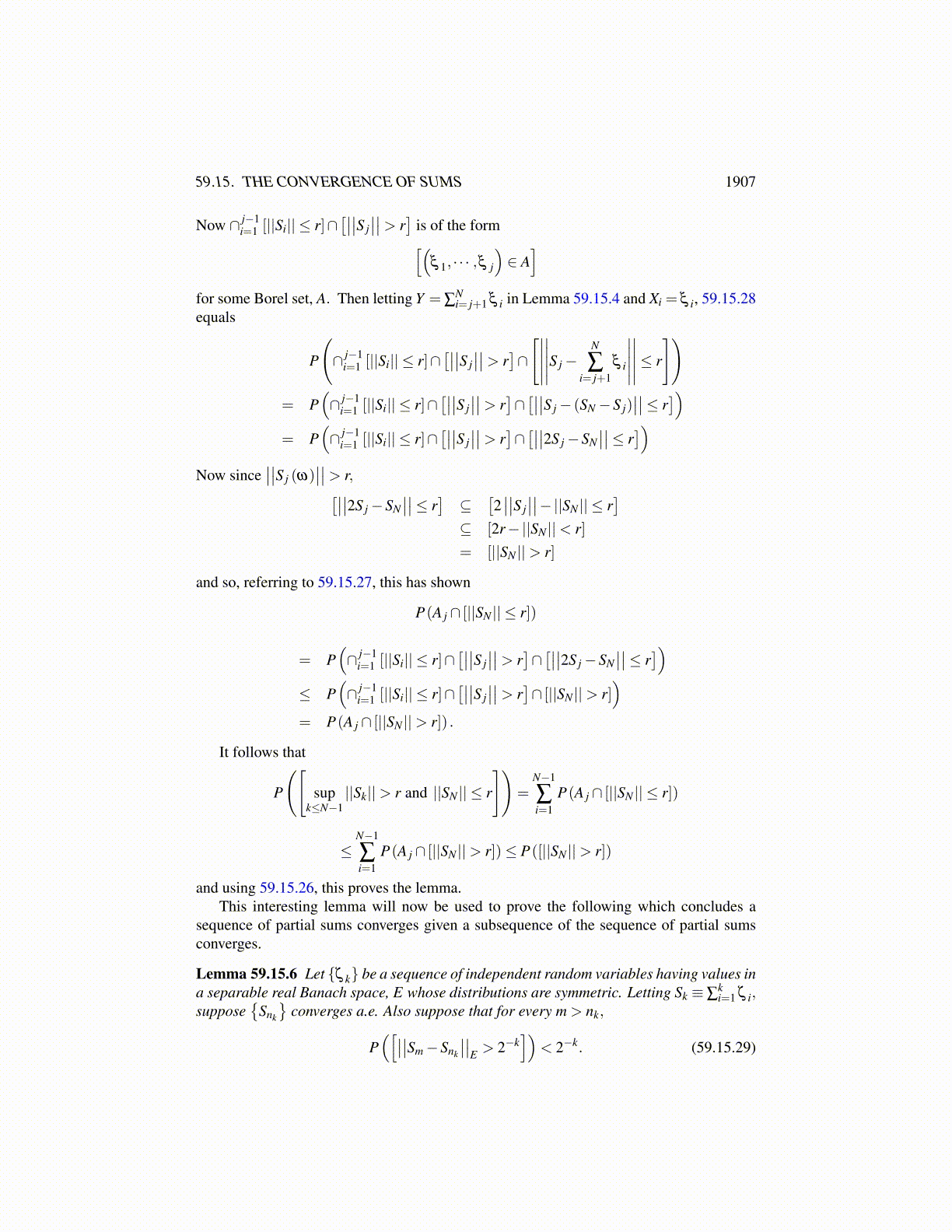
59.15. THE CONVERGENCE OF SUMS 1907
By induction, it follows that if you have n independent random variables each having sym-metric distribution, then their sum has symmetric distribution.
Here is a simple lemma about random variables having symmetric distributions. It willdepend on Lemma 59.15.2 on Page 1906.
Lemma 59.15.4 Let X≡ (X1, · · · ,Xn) and Y be random variables defined on a probabilityspace, (Ω,F ,P) such that Xi, i = 1,2, · · · ,n and Y have values in E a separable Banachspace. Thus X has values in En. Suppose also that {X1, · · · ,Xn,Y} are independent andthat Y has symmetric distribution. Then if A ∈B (En) , it follows
P
([X ∈ A]∩
[∣∣∣∣∣∣∣∣∣∣ n
∑i=1
Xi +Y
∣∣∣∣∣∣∣∣∣∣< r
])
= P
([X ∈ A]∩
[∣∣∣∣∣∣∣∣∣∣ n
∑i=1
Xi−Y
∣∣∣∣∣∣∣∣∣∣< r
])
You can also change the inequalities in the obvious way, < to ≤ , > or ≥.
Proof: Denote by λ X and λY the distribution measures for X and Y respectively. Sincethe random variables are independent, the distribution for the random variable, (X,Y ) map-ping into En+1 is λ X×λY where this denotes product measure. Since the Banach space isseparable, the Borel sets are contained in the product measurable sets. Then by symmetryof the distribution of Y
P
([X ∈ A]∩
[∣∣∣∣∣∣∣∣∣∣ n
∑i=1
Xi +Y
∣∣∣∣∣∣∣∣∣∣< r
])
=∫
En×EXA (x)XB(0,r)
(n
∑i=1
xi + y
)d (λ X×λY )(x,y)
=∫
E
∫En
XA (x)XB(0,r)
(n
∑i=1
xi + y
)dλ XdλY
=∫
E
∫En
XA (x)XB(0,r)
(n
∑i=1
xi + y
)dλ Xdλ−Y
=∫
En×EXA (x)XB(0,r)
(n
∑i=1
xi + y
)d (λ X×λ−Y )(x,y)
= P
([X ∈ A]∩
[∣∣∣∣∣∣∣∣∣∣ n
∑i=1
Xi +(−Y )
∣∣∣∣∣∣∣∣∣∣< r
])
This proves the lemma. Other cases are similar.Now here is a really interesting lemma.